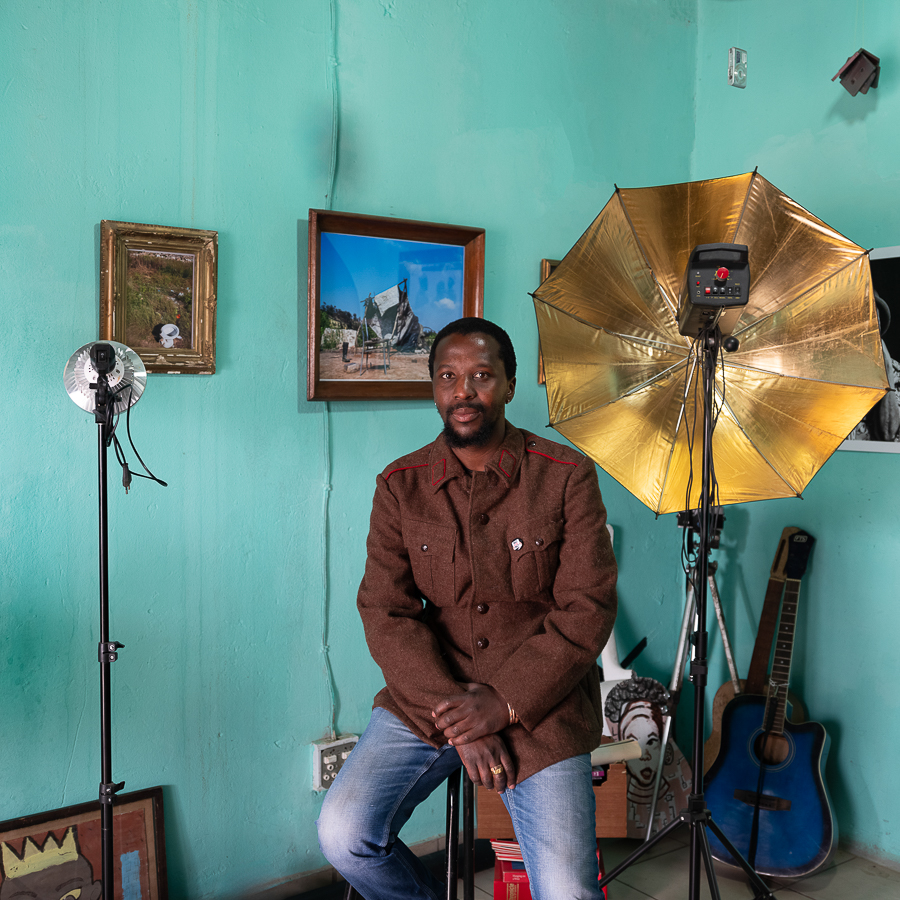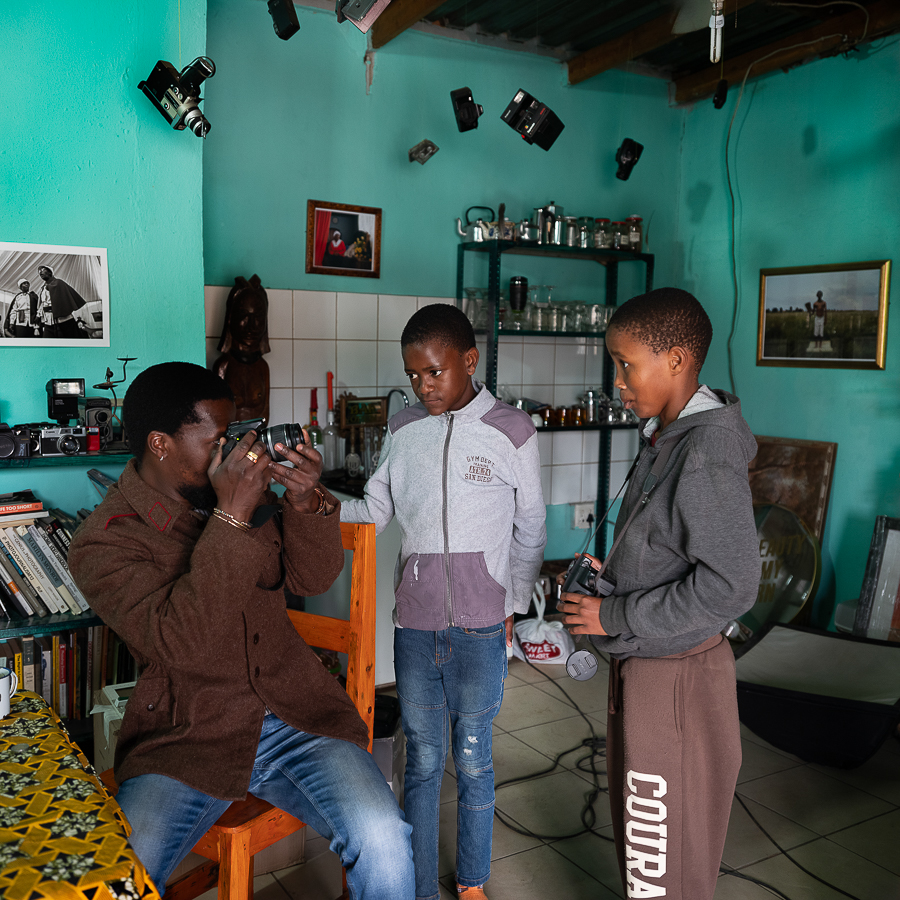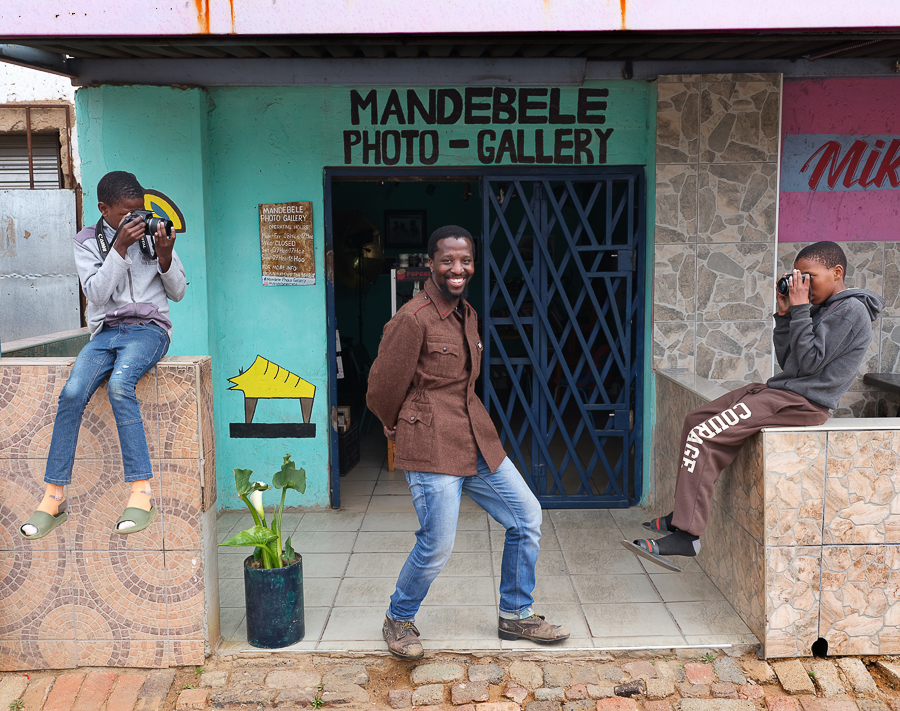The internet is awash with descriptions of the space that South African documentary photographer and journalist Gopolang Ledwaba set up at 9737 Cemetery Road, Braamfischerville, Soweto, earlier this year. The Mandebele Photo Gallery, we read, is a space for education, “incubatorship”, and upliftment; a resource centre; a project space; a cultural hub; and a café. Ultimately, the space, not much bigger than a garage, is a community centre.
Multi-purpose spaces are not unique; you find them in suburbs and urban neighbourhoods all over the world. But this is Braamfischerville, an area named after Nelson Mandela's legendary lawyer, Bram Fischer, a white, communist anti-apartheid hero who paid a high price for his activism – years of imprisonment. Braamfischerville is (euphemistically speaking) a less affluent neighbourhood in the township of Soweto, which is itself a product of vicious apartheid politics. Soweto, often to the surprise of visitors, is stratified with better and lesser neighbourhoods. Braamfischerville belongs to the latter category.
You might think starting a gallery in a neighbourhood like this is a fool’s errand. Some locals certainly thought so. Founder Gopolang Ledwaba remembers people asking him after the opening last March: “What is this white thing doing here?”
Call it ignorance. After all, South Africa has a rich history of documentary photography by professionals from the black community. Think of Peter Magubane, Ernest Cole, and George Hallett. Think of Sam Nzima, who in 1976 shot the iconic photograph of the first victim of police violence against demonstrating students, Hector Peterson. Or Santu Mofokeng, Cedric Nunn, and Andrew Tshabangu. The weekly Drum magazine, which was widely read in the black community, especially in the 1970s, was an incubator for black storytellers, in both text and image. Post-apartheid South Africa has produced internationally acclaimed photographers and visual activists such as Zanele Muholi, Neo Tsoma, Lebohang Kganye, Sabelo Mlangeni, and so many others whose work ZAM has championed over the years.

And then there is Ledwaba, who – like many of his contemporaries – was trained at the remarkable Market Photo Workshop in Johannesburg. Inspired by Santu Mofokeng, who died far too young, as well as by old and new masters of West African portrait photography such as Malick Sidibé and Seydou Keita, Ledwaba’s work is now attracting international attention. He is driven by a desire to not separate black people from the reality of which they are a part, because that is what bothers him about the imagination of many white photographers. There is often “no match with reality.” Remarkably, it was a white photographer, Greg Marinovitch, eyewitness to the brutal violence with which white rulers in the 1980s met the swelling resistance to racist politics, who lit the visual fire in Ledwaba. “We recognized ourselves in the way Greg portrayed us,” he says.
Ledwaba occasionally works on developing his own portfolio, but most of his time is spent in the space he opened earlier this year. There, roughly four or five times a day, he welcomes a passerby who wants to know “something” about photography, or brings a proposal for collaboration. He teaches there, usually on Saturdays, to a handful of children, flipping through photo books with them or explaining how a camera works. He guides visitors there, fellow photographers from nearby Johannesburg who are curious to see what the space has to offer, check out the modest exhibition of displayed photography, and listen to Ledwaba's requests. People stop by to drop off old cameras they no longer use, and sometimes a tattered photo book. Welcome donations, which Mandebele desperately needs. With his staff, he pours coffee and does photo shoots – these are the elements of a modest revenue model that keeps Mandebele afloat.

“I honestly had no idea what a gallery was,” Ledwaba says in a video call. Encouraged by his mentor at the Market Photo Workshop, he visited the Goodman Gallery one fine day, in one of Johannesburg's leafy suburbs. “I found art and photography there and feasted my eyes. But how did this work? Where does all this come from? How does it find its way to this place? How do you get something like this financially?” He started reading and talking about it, until one day a collection of insights was formed that he could work with, insights he could translate from Jan Smuts Avenue, on which Goodman is located, to Cemetery Road in Braamfischerville. From people with well-stocked wallets to people without, but with an equal curiosity about the imagination of life, about means to make life richer, more exciting, fulfilling.
That is what Ledwaba is ultimately all about: a space that entices you to look over the fence, to discover new horizons that you can capture with a click. Mandebele Gallery will undoubtedly encourage the people of Braamfischerville to add more albums, selfies, and framed images on the wall to what is already an impressive treasure trove of collective memory. It’s evidence of a camera being used as a tool for self-determination. Maybe, because once there was such a space and someone like Gopolang Ledwaba who gave Peter Magubane, Zanele Muholi, or Ernest Cole an idea, one day another star will rise.
In this video you can see what the gallery looks like.
Follow the Mandebele Gallery on Instagram and check out the photography of Gopolang Ledwaba on Instagram.
Call to Action
ZAM believes that knowledge should be shared globally. Only by bringing multiple perspectives on a story is it possible to make accurate and informed decisions.
And that’s why we don’t have a paywall in place on our site. But we can’t do this without your valuable financial support. Donate to ZAM today and keep our platform free for all. Donate here.


